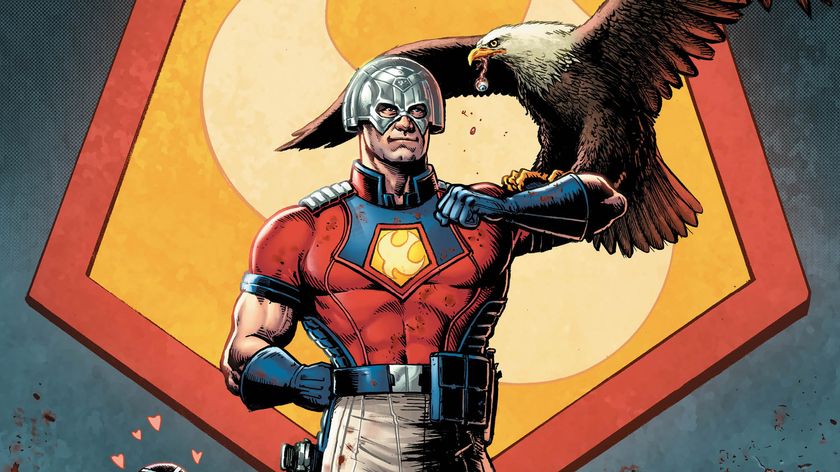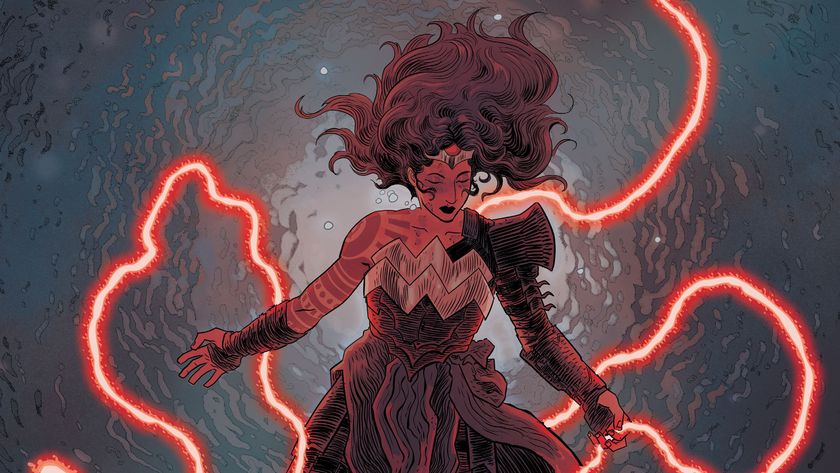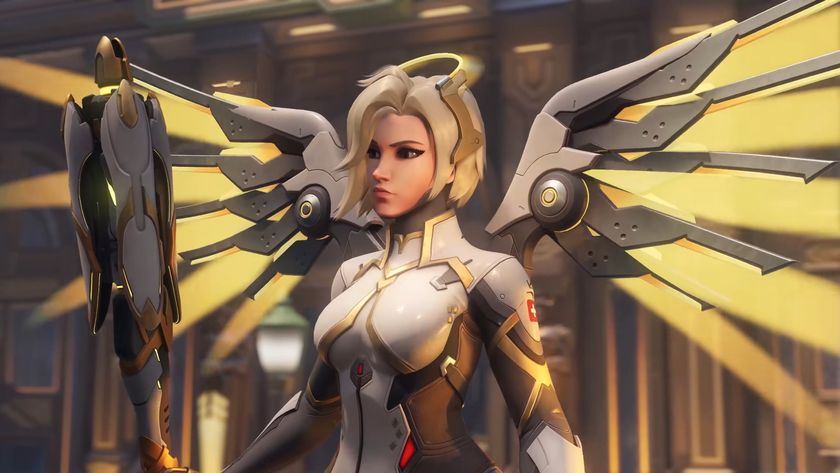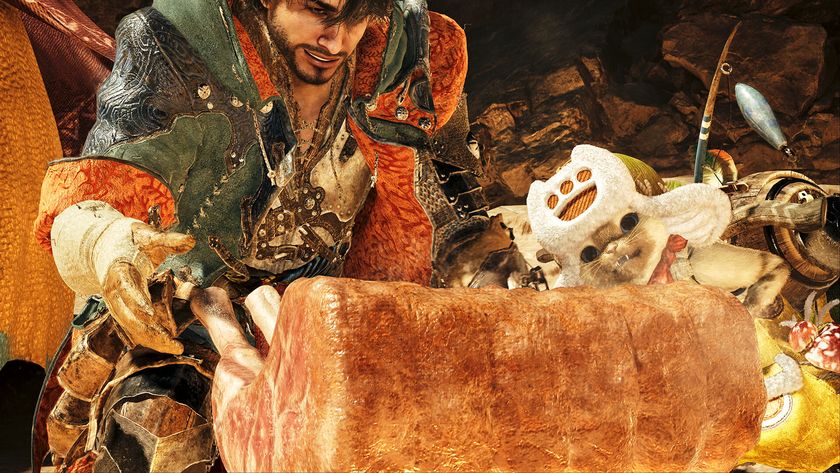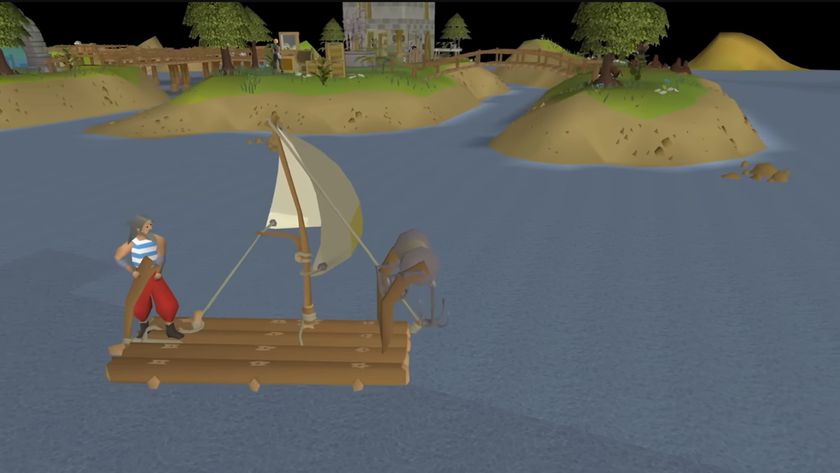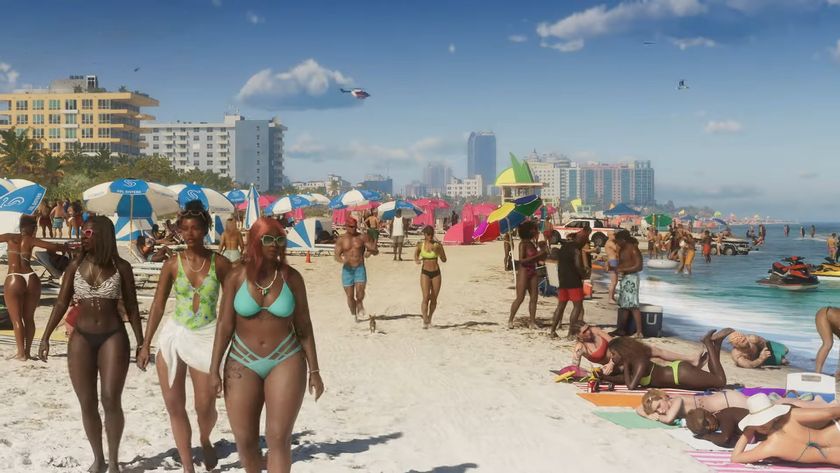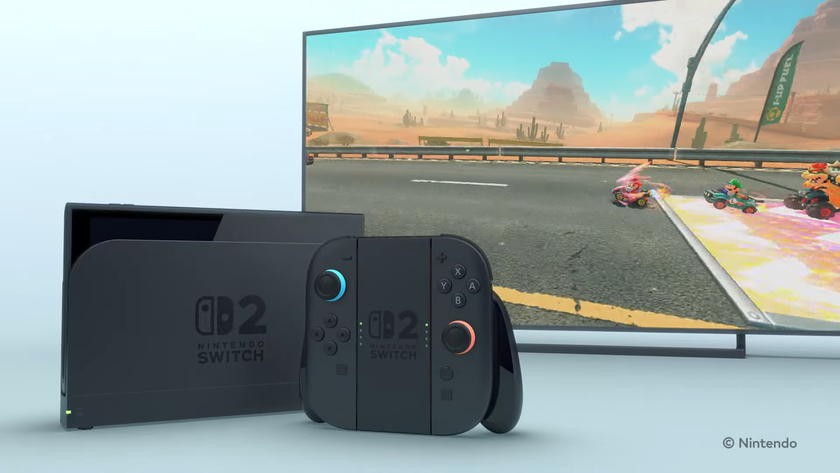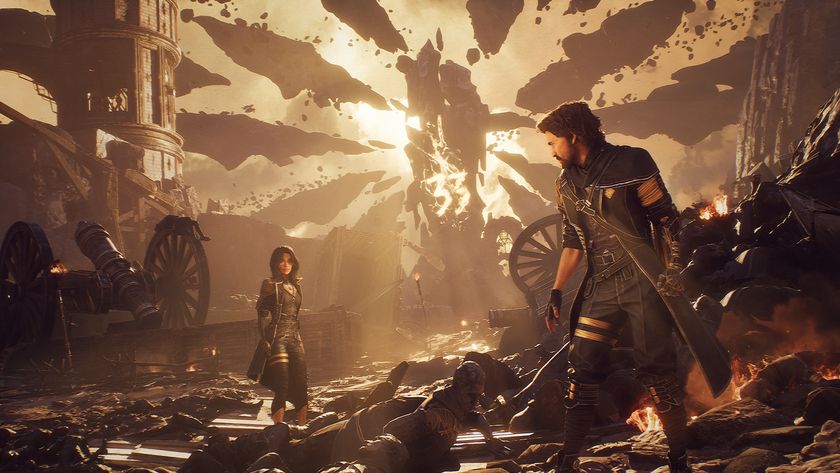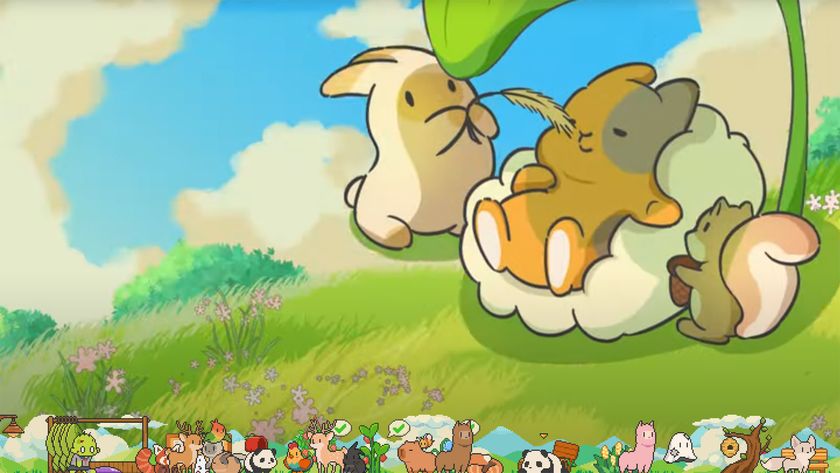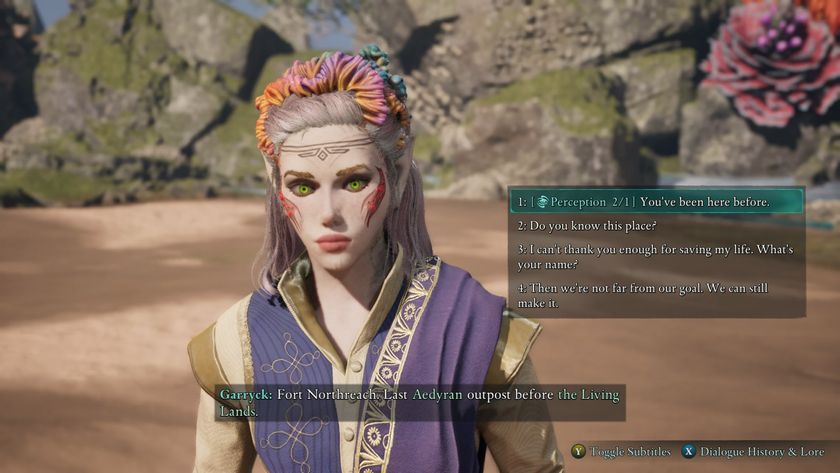What's next for Selina and Red Claw in Catwoman
Catwoman writer Tini Howard reveals why she brought Red Claw into the DC Universe from Batman: The Animated Series
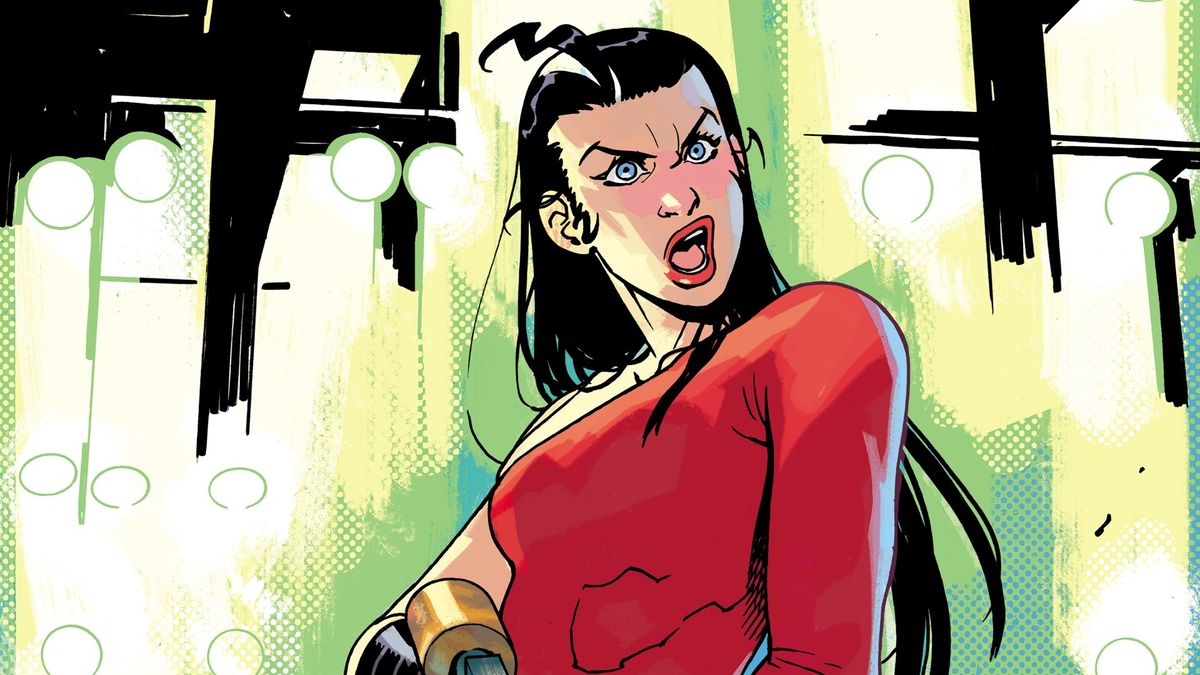
Writer Tini Howard took over the ongoing Catwoman title at DC in January, and in the six published issues in her run so far, Selina has expanded her Rolodex with new allies and enemies. At the end of Catwoman #43, Howard even introduced a Batman: The Animated Series villain, Red Claw, to the comics.
For the last 30 years, this assassin has existed solely in the Batman animated universe, but now that's changed – and it appears she won't be leaving anytime soon.
Following the publication of Catwoman #44 on June 21, in which Red Claw faces off with Catwoman and a very reluctant Harley Quinn (who just wants to play roller derby and enjoy her road trip with her friend), Newsarama spoke with Howard about the character's comics intro, her own history with Batman: The Animated Series, and the best parts of writing this particular ongoing title.
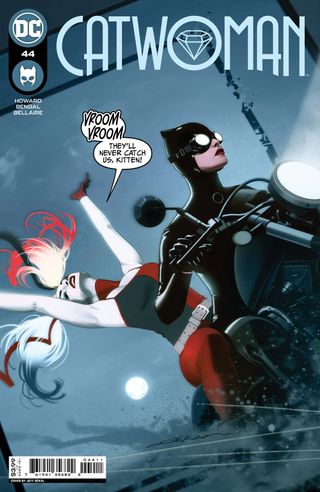
Samantha Puc for Newsarama: Tini, when did you first meet Red Claw?
Tini Howard: I am old enough to have met Red Claw when the world did, so in 'The Cat and the Claw' – her debut in Batman: The Animated Series. '92, right? I was seven years old. There's a picture of me somewhere, wearing a t-shirt from the '89 Batman movie at four years old. My dad really liked Batman, so I grew up liking Batman, too. I started watching the animated series and I don't remember sitting down to watch it – I was seven – but I remember getting into it.
I've always been a girl who's a big fan of the more rambunctious female characters who are not always in stereotypically feminine roles. I've always loved the moment where Batman finds out about Red Claw and he's like, 'She's a woman?' That whole subversion always excited me, and then it's a Catwoman-heavy episode too.
Nrama: What inspired you to want to introduce her into the comics?
Comic deals, prizes and latest news
Get the best comic news, insights, opinions, analysis and more!
Howard: When I was working on brainstorming for the Catwoman arc I was working on... I work with one of my best friends and favorite co-writers, my husband, Blake Howard, who is actually writing an upcoming Batman: Urban Legends story with me and we wrote Vampire: The Masquerade comics together. I was brainstorming and bringing up all these characters I love who I think are so cool but we haven't seen them in a while, because there are so many characters in Gotham for writers to use and people are always making new ones. I was like, 'I want to bring back old ones.' I think he was the first person to actually say, 'Have you considered Red Claw?'
I said, 'That's such a good idea,' and the thing about it I love the most is that it's very classic for the comics to bring in characters – especially cool chicks – from the Animated Series universe. I was really excited about that idea and she was just perfect for the role I needed in the story. Issue #44 just came out, so when folks read #44, they'll see Red Claw's role in it. She's kind of perfect for it. I needed someone as headstrong and cool and determined as Selina, but would be a good foil for the reasons presented in the issue.
Nrama: How much of Red Claw's actual Animated Series background are you incorporating into her character here?
Howard: One of the most difficult things about comics is – I talk about it as real estate: we have 20 or 22 pages a month to tell a story. The temptation is to be like, 'OK, issue #45 is the backstory of Red Claw, and then #46...' Well, this is a Catwoman book. I would love to get more into Red Claw and I have plans for her to show up again. As of the end of #44, they have a bit of an agreement.
But as far as bringing in more of her backstory, it's not super fleshed out, which is cool because on one hand, it gives me the opportunity to flesh it out, but in the case of that issue, I actually had a lot more fun just working on her present and figuring out what kind of person she would be now. How the 2022 version of Red Claw looks for our audience and for Catwoman. We don't get too far into her past and her story; she's the vaguely Eastern European assassin with the sexy, deep voice and her crew of flunkies. I'm really happy to establish her and make her a character. As a comic writer, there's always a use for a good mercenary with their own reasons, especially with the cast I've been building with Catwoman. I've been trying to do a lot of building up her connections with existing Gotham characters, or connections that would be there or maybe haven't been there but I think should be, like with Catwoman and Red Claw.
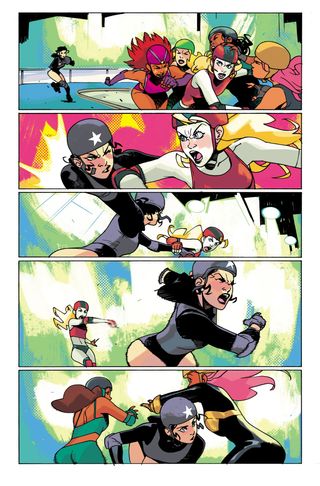
Nrama: Are there other ways Batman: The Animated Series has influenced your writing on Catwoman?
Howard: Oh yeah. That series was beautiful. It's about more than just, 'Oh, I grew up with it! I like it. I'm self-inserting stuff I like.' It's a beautiful piece of art. It is, for a lot of people, the definitive version of Gotham and it's definitely one that inspires me a lot. More than anything else to me, it's the dark colors and the musical stings and those aspects of it that really work for me.
That show is a really effective, entry-level version of a lot of characters for a lot of people. That's a certain kind of writing skill that I think often goes ignored, especially in this medium. People so often want you to sit down to write a character and take everything that's ever happened to them and every version of them that every different person likes and make it into something that reconciles. And that just doesn't happen. So really it's just figuring out the version of the character that honors everything else that came before, but that also speaks to not just the things that are important about that character to you, but what role you think that character has in Gotham. Who they are and what they do. We've seen
Catwoman over 80 years of publication as someone who's been a real hero and a real villain, and I really like a version of her who's a good person to the core but who understands that the law and the rules aren't always made for her. That's something I really bring to the book as a bisexual woman writing the book – it's not that I put myself into Selina, it's that as a writer of the life experience I have, I realize things she realizes. Women don't get listened to. Being bisexual is complicated. Relationships, even with the love of your life, are more complicated than just getting married and living happily ever after. All these things that I think are important to her and to how she sees Gotham. I think the Animated Series did a good job of making her a character who – like a cat – you're not really sure what's on her mind. I try to let readers into what's on her mind, but I do want the sense that the people around her don't necessarily know how sure she is of anything.
Nrama: What has been your favorite part of writing this series so far?
Howard: The Ed Brubaker and Darwin Cooke Catwoman run is really important to me formatively, not even just as a story. There was an aspect of womanhood in that story – which, you know, by two men, but a lot of my favorite stories are about women written by men. I think men can write incredible stories about women. I talk about Strangers in Paradise basically every chance I'm given. Those early books spoke to me about femininity, and they were referencing a lot of things like noir heroines and other things that were "outside" of comics.
I think we, as a society, have a problem with trusting femme people. In comics, too. As a female writer, I'm often asked if I'm the artist, and it's not that it's a less intense or difficult job, it's because I think we have a sense of writers as drivers and artists as passengers. Sometimes when people hear there's a woman in the driver's seat, they freak out a little. And I don't care and neither does Catwoman. I'm not here for your trust and your approval. And I'm not saying, 'Fuck people who read this book. I don't want them to love it.' Catwoman is not a people-pleaser, and when I write her, I feel like I don't have to be either. It feels good and strong and it's something I've liked doing in my career. I really enjoy that Catwoman does not have a lot of roles expected of her. Her life is very much her own and what she's carved out, as complicated as it is.
I think she has a different idea of, 'Here I am in my own little space and no one can bother me.' It's like, 'Well, Selina, nobody can run from their past. Nobody can run from the people they love. You literally live in the same city as a guy you were almost married to, you can't avoid that.' I think for me, it's that bringing in a sense of her being unapologetic. She doesn't care if you don't trust her or if you would rather her live her life differently. She's ambitious, she's motivated, she's got a goal, and I get to write that way. And that's really freeing.
Nrama: What has been the reader response to the appearance of Red Claw at the end of Catwoman #43?
Howard: People were excited! I think they were surprised, too, because we didn't pre-announce it. I'm glad we didn't, because I like surprises. I always joke that if it were up to me, you wouldn't even have solicits. I don't want to spoil anything about the book! But people were stoked and I'm really glad too, because in comics, with solicits and the cycle of things, it's kind of hard to get a surprise off on people. And I'm also glad that she showed up at the end of issue #43 and we get to do more with her.
Issue #44 is where I think she really shines. We get to see what makes her scary and watch her have a little arc of her own while she meets Catwoman in the world of comics. We find out why she's there and why she's after Selina. We have Bengal on art, who's just an incredible artist and is infamous for doing a lot of great work, but did a book called Death or Glory that's like a car chase book... Car chases are so hard to draw. It's so hard to make a bunch of static pictures feel like a realistic car chase, but when I saw we had Bengal on art, I was like, 'We're doing two issues of car chases.' [Laughs] He was very happy to do it and it turned out great, too. It was a really great example of working with the artist because he's drawn car chases before. There are pages where he's like, 'The physics here didn't make the kind of sense you thought you were making, so I changed them.' And I'm just, 'This is why I wanted you to draw car chases!' [Laughs]
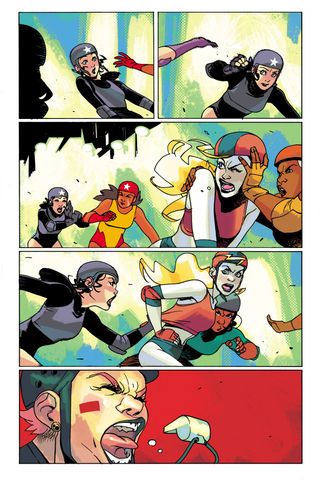
Nrama: It seems Red Claw is going to appear again or will continue to appear – what can readers expect from her presence moving forward?
Howard: Well it's always good to be in Selina's Rolodex, right? She is someone who understands the utility of people in a way that isn't ignorant of their emotional and personal value, too. That's something Selina and I have in common – just because someone is useful, doesn't mean they're only useful. You can love them and care for them and be their friend but also be like, 'You are useful. You have a skill. You have a specialty.'
I can't say exactly what's coming up for Red Claw, but she's definitely not fading into the ether. Selina is acquiring a crew over these issues. She's been putting together, piece by piece, exactly who's around doing the kinds of things that are touching her life and what they're doing. Without spoiling the end of issue #44, [Red Claw and Catwoman] certainly have a different relationship at the end than they do at the beginning, and it's a language that they both speak.
Nrama: We don't see them interact as much, but what was it like to play with the dynamic between Red Claw and Harley?
Howard: That was fun, especially since both those characters appear from Batman: The Animated Series. It's always tempting to have Harley break the fourth wall and say dumb shit like, 'I know her!' The one thing she does say is she does quote Batman. She says, 'Red Claw is a woman?' which is a deliberate nod because I thought it was funny to have Harley say it. Part of this is just fun because as you're building the story, you're setting up what these interactions are going to be so it's less, 'What happens if you smack Harley and Red Claw together?' And it's more, 'Well over these past two issues, Harley and Selina have been trying to have a fun time, but all these things keep getting in between them and making them feel like they're maybe not having the same kind of trip.' Harley's kind of pissed about it, so when the confrontation with Red Claw happens, it's this great moment of two women fighting over their friend, or someone they respect.
Harley is just really fun to write. I don't think I'm the first person to say that and I don't think I'll be the last, but it was my first time writing her and something I really enjoy leaning into about Harley is that I don't think Harley is stupid, but I think it's fun to write female characters being dumb. There's such a weird double standard in place. We can't be gross, we can't be dumb, we can't be ugly, we can't be unpleasant, we can't be mean to boys unless it's in a way that's approved by the narrative. I think Harley's brilliant. I think she's a great character. I think she's a great person. I think she's a smart woman. She's been to psych med school; she knows her stuff way better than a lot of us.
I think she's a genius, but I think – especially now – there's a really great rise in feminine acceptance of the idea that it's okay to be silly and it's okay to just be a bimbo if you want. So that was a fun thing to put into Harley. She's a great friend and she's a genius, but she's on a road trip with her homie. She's acting stupid. She wants to play roller derby. She wants to go eat at the biscuit place. She wants to snuggle and play with the ice machine. I think sometimes, people are really worried about the infantilization of Harley, which I totally get and respect. I have a problem with the infantilization of a lot of stuff meant for women anyway, but I also think it's important that even women who have been to medical school and been through a lot of trauma can act like dumb girls sometimes. We all deserve to act like dumb girls sometimes.
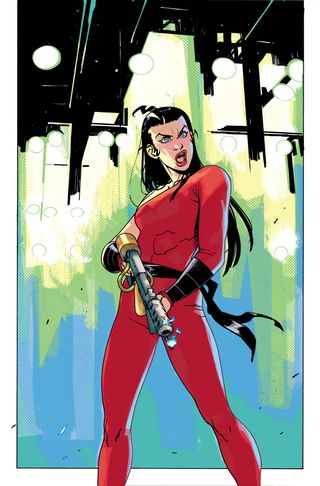
Nrama: You're the first DC writer to bring Red Claw into the comics, so do you think she'll make her way into the larger DC Universe?
Howard: I know that in the wide world of media rights, there are occasionally things that prevent us from using every character when we want to. Because she comes from another medium, it's not as easy as just sticking her in wherever I want. But I do really love her. I love a big, mean woman with big shoulders and a low voice. She's so good-looking. She's so hot. Seeing Bengal draw her for the first time was just like... I hope she does [appear elsewhere]. I think she's a great character.
Something I've really tried to work on a lot in this run with artists I've worked with is, I'm big on character silhouette. I don't think all your men should look like Ken dolls and all your women should look like Barbies. Part of why I love Red Claw is because she's got that silhouette. Her, Harley, and Catwoman next to each other are three women with completely different silhouettes, completely different builds. I'm really grateful I work with artists who understand that and draw them that way. And same with male characters too, like the way Nico [Leon] draws Dario [Tomasso] is really exciting to me because I don't think every gay male character should look like a go-go boy. I think Dario would make a hot go-go boy anyway.
Catwoman #44 is on sale now.
Don't miss the best Catwoman stories of all time.

Samantha Puc (she/they) is an editor at Newsarama and an avid comics fan. Their writing has been featured on Refinery29, Bitch Media, them., The Beat, The Mary Sue, and elsewhere. She is currently pursuing a Master of Fine Arts degree in creative nonfiction at The New School.
